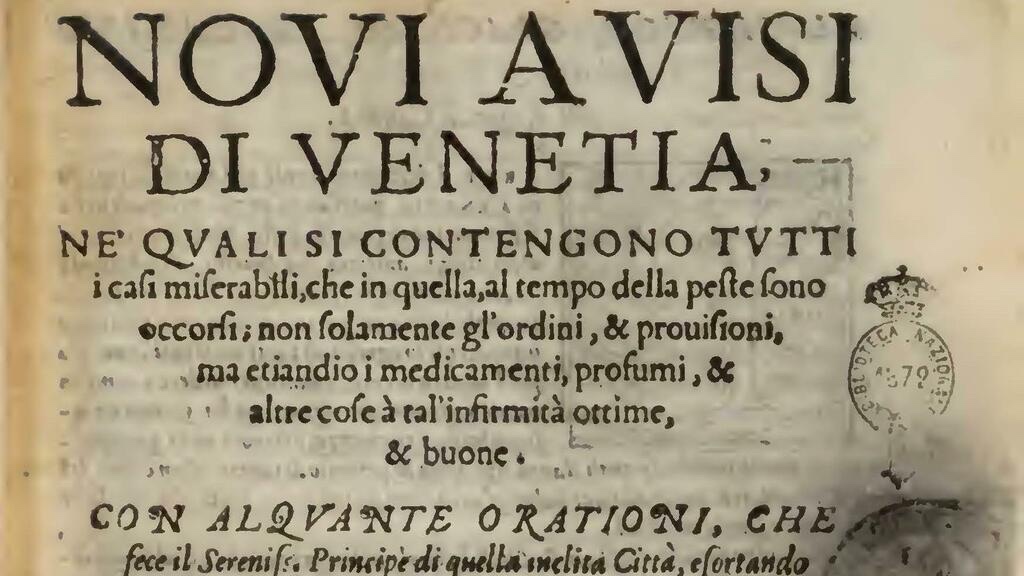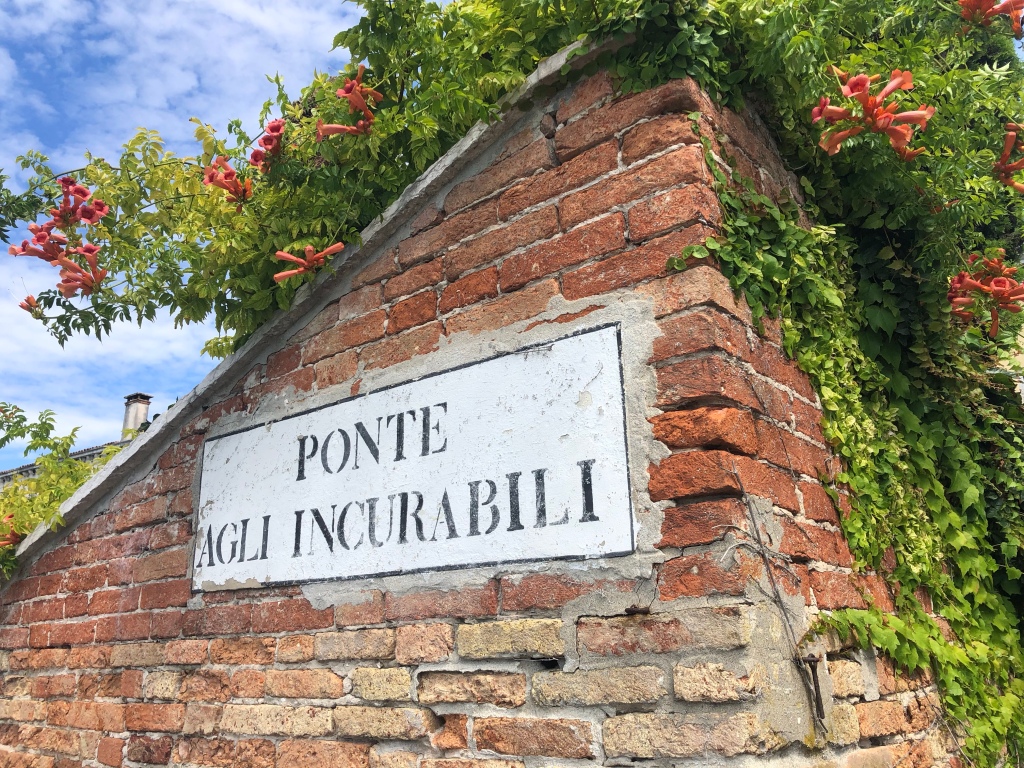Did you know that the people of Venice invented the concept of ‘quarantine’. Venice was a busy sea port, trading with the whole of the Mediterranean region. Ships arrived in the lagoon from Turkey, Egypt, Greece, North Africa, Spain and France. When a ship arrived from foreign shores and was suspected of carrying disease it was held on an island, located at the edge of the lagoon for a period of forty days. This allowed the people of Venice to control diseases arriving on their territory.
FORTY days was the period of time deemed necessary to isolate people, so that you could be sure they would not introduce disease or infection into your population. Forty in Italian is ‘quaranta‘ and from this the term ‘quarantine’ was taken. As early as the 15th century the Venetians appointed government officials to supervise the ‘quarantine’ of any groups of people or individuals showing signs of illness. These people were kept isolated from the citizens of Venice, in a deliberate strategy to limit the spread of disease.
LAZZARETTO in Italian came to mean a remote or isolated place, usually an island, where people with contagious illnesses were kept. The word Lazzaro was also used for a leper colony. Even now in Venice there is an area of pavement over-looking the Giudecca Island called the Fondamente degli Incurabili. The ‘Fondamente of the Incurables’. A quarantine island was established in the lagoon at Lazaretto Vecchio in 1408. It was used as a hospital and medical isolation area for centuries. Later a second quarantine island was created at Lazaretto Nuovo. The idea of isolating sick people and thus containing the spread of disease usually worked but it was not always a success. Recently archaeologists working on Lazaretto Vecchio discovered several mass graves, they suspect there are many more waiting to be uncovered. Many of those who died there were strangers on foreign soil, they died leaving no personal record behind and no final message for their loved ones.
DESPITE Venice’s creation of a ‘quarantine’ procedure to attempt to minimise disease entering the city, the plague did arrive in Venice at regular intervals over the city’s thousand year trading history. Most notably in the 1340s, 1570s and then the 1630s. The sixteenth and seventeenth century plagues both resulted in the construction of magnificent churches, built to praise God for delivering the city through such terrible ordeals.


REDENTORE – First came Il Redentore Church designed by architect Andrea Palladio towards the end of his career. This elegant and beautiful church on the Giudecca Island hosts a huge ceremony every July when the Venetians make their way to the church to give thanks for surviving the plague. A temporary bridge is built across the water linking the Dorsoduro neighbourhood to the Giudecca Island. Pilgrims and locals can walk across the floating bridge to worship at the imposing Redentore Church. The event takes place on the third Sunday of July each year, usually around 18th July.


LA SALUTE – The second church built by grateful Venetians for surviving yet another plague was the Church of Santa Maria della Salute, designed by Baldassare Longhena. It has a fabulous baroque exterior and domed roof line. Every year in November the church is filled with flowers and candles and Venetians go to give thanks for surviving, once again, the plague. Last year Venetians were out in force to celebrate the end of the ‘acqua alta’ high waters that flooded the city and caused great damage for several days starting on 12th November, 2019.

PLAGUE – The link between Venice and plague was a subject of great interest to Thomas Mann, the German writer, who penned the atmospheric and memorable novella ‘Death in Venice’ published in 1912. This story was made into a film in the 1970s by Luchino Visconti, who cast the brilliant Dirk Bogarde as the central character, a famous writer suffering from writer’s block. The film was set on the Lido di Venezia at the Grand Hotel des Bains (sadly now closed). In the film Bogarde becomes increasingly obsessed with a handsome young boy also staying at the hotel called Tadzio. The book and the film focus on longing, desire and sadness. As Bogarde spends his days on the beach in a deck chair dreaming of the youthful Tadzio, so Venice the city succumbs to a cholera epidemic. The City of Venice and Bogarde are in death’s firm grip and it seems there is no escape for either the city or the great writer.

VENICE – Venice’s determined struggle to survive has haunted this beautiful and ethereal city for centuries. Floods, disease and war have challenged ‘La Serenissima’ many times over the years. It is said that Venice was founded in 421 AD, although this is almost certainly a simplification, next year Venice will celebrate 1600 years of existence, nestled in its watery hinterland between the plains of the Veneto to the north and west and the Adriatic Sea to the south and east. The resilience of the city and the Venetian people is a lesson to us all as we continue to grapple with plague and disease even in the 21st century.
Key Points:
- For a gallery of images from the 2020 celebrations: Redentore, Venezia: July 2020
- Venice was an international trading city for centuries. On at least three occasions the plague arrived in the city, killing many, many members of the population.
- As a response to disease arriving in the city – usually brought by a ship arriving from far away, Venetian authorities established a ‘Quarantine’ island at the entrance to the lagoon. Ships and their crews were held on the island until the risk of contagion had passed (generally regarded as a forty day period).
- Many other countries copied the Venetian example.
- New York – There were two islands in the outer harbour of New York, used as quarantine islands. These were Hoffman Island and Swinburne Island. Ships were not allowed to proceed to Ellis Island, where immigrants were processed and allowed entry in the USA until sick or contagious individuals had disembarked at one of the quarantine islands.
- I’ve written about Venice, Health and Quarantine at: Venice – Health, Quarantine and Santa Maria della Salute
- The photo below shows Dirk Bogarde, who starred in the 1971 film ‘Death in Venice’. The story is about a writer, coming to the end of his days. He takes a holiday on The Lido of Venice, whilst the city suffers an outbreak of cholera. The film was inspired by Thomas Mann’s 1912 novella. A truly wonderful and atmospheric film.
- For numerous articles on Italy, The Alps, British Isles and France please visit my blog: www.greyhoundtrainers.com
- Our sister company: www.grand-tourist.com offers unique tailor-made travel experiences for very small groups and individuals. These tours run every few months – the next tours are in September and October, 2022.


- Written: 8th April, 2020
- Updated: 1st July, 2020 / 16th July, 2022
- The photo below reminds us that disease has always been a problem in Venice. It is memorialised in the names of alleys & fondamente. ‘Ponte agli Incurabili’ translates as ‘The Bridge of the incurables’


So interesting, Janet! You must do a lot of research to find out the story behind the story! Ah…that must be why you’re called the “Educated Traveller! Your accompanying photos are stunning!
LikeLiked by 1 person
Very interesting piece of history and so relevant.
LikeLiked by 1 person
Thank you so much!
LikeLiked by 1 person